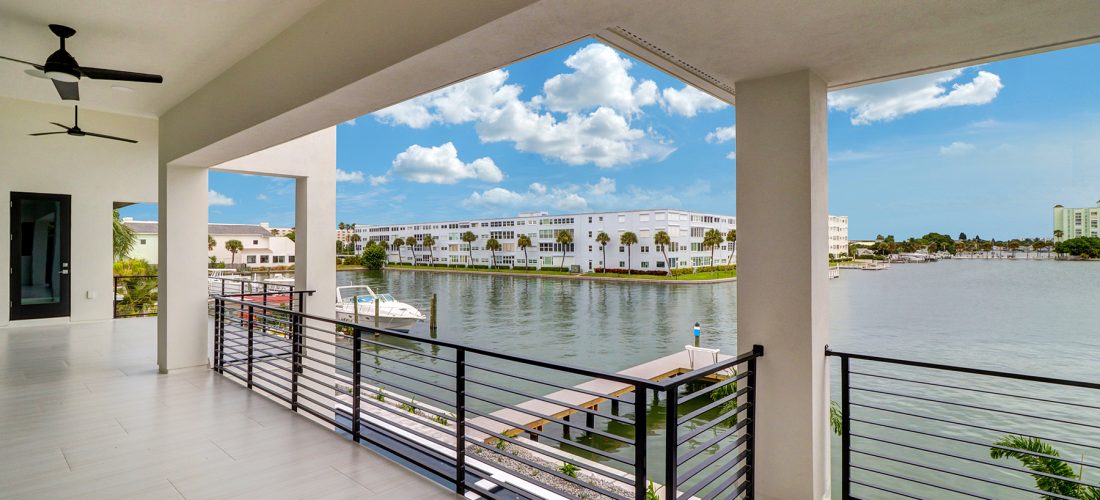Disclaimer: This article is for educational purposes only and does not constitute legal, tax, or construction advice. Always consult licensed professionals before making decisions.
Coastal living brings beautiful scenery—and the ongoing challenge of flood risk. If your home sits in a designated flood zone, especially after storm damage, you generally have three strategic options:
- Rebuild/Remodel Your Existing Home
- Lift (Raise) and Remodel Your Current Home
- Tear Down and Build a Fully Elevated New Home
Below, we explain each in clear terms, outline pros and cons, and offer practical tips so you can choose the path that fits your budget, timeline, and peace of mind.
1. Rebuild/Remodel Your Existing Home
What it is: Repairing storm damage and updating finishes—such as replacing flooring, fixing walls, and installing flood-resistant materials—without changing the home’s elevation or footprint.
- Pros
- Lowest upfront cost: Depending on the incurred damage, project costs can vary greatly.
- Fast turnaround: Most projects wrap in 4–6 months, so life returns to normal quickly.
- Familiar surroundings: You keep your home’s original look, yard, and neighborhood ties.
- Cons
- No added flood protection: Your home remains at its current elevation and is vulnerable to the next storm.
- Flood insurance stays high: Premiums won’t drop until you meet elevation requirements, if they will insure the existing property.
- Code upgrade trigger: Under Florida’s “50% rule,” if your remodel cost exceeds half your home’s pre-project value, you may be forced to bring the entire structure up to current flood and building codes.
Tip: If you see repeated minor flooding, compare the total cost of ongoing repairs and insurance versus a larger mitigation project—sometimes lifting or a full rebuild makes more financial sense over time.
2. Lift (Raise) and Remodel Your Current Home
What it is: Physically lifting your existing house on supports so it sits above expected flood levels, then repairing damage and modernizing interiors and exteriors.
- Pros
- Significant flood protection: A few feet of lift can solve the flood zone concerns.
- Lower insurance premiums: Elevation often reduces flood insurance costs by 40–60%.
- Preserves layout: You maintain your existing footprint and lot orientation.
- Cons
- Moderate to high cost: Combined lifting and remodeling usually runs $150,000–$400,000+
- Complex approvals: You’ll need engineering plans, extra permits, and detailed inspections, which can add weeks or months.
- Temporary relocation: You’ll likely have to live elsewhere while the home is lifted and secured.
Tip: Look into state and federal grant programs (e.g., FEMA Hazard Mitigation Grants) or low-interest loans that can cover a portion of lifting costs.
3. Tear Down and Build a Fully Elevated New Home
What it is: Demolishing the damaged structure and constructing a brand-new house raised on pilings or piers, built to current flood, wind, and energy codes.
- Pros
- Maximum resilience: Your new home meets the latest flood-elevation standards and is designed for future storms.
- Top resale value: Modern, code-compliant homes command premium prices and attract move-in–ready buyers.
- Design freedom: Customize every detail—floor plan, materials, finishes, and energy-efficient systems.
- Cons
- Highest investment: Most full teardown-and-rebuild projects in Sarasota or St. Petersburg start around $1 million and can exceed $2 million for luxury specs.
- Longest timeline: From demolition through permits to move-in can take 18–24 months.
- Full relocation required: You must secure alternate housing for the entire construction period.
Tip: For homes requiring extensive repairs, a fresh, elevated build often offers a better long-term return when factoring in maintenance, insurance savings, and energy efficiency.
Making Your Choice: Key Questions
- How long will you stay? Short-term owners may prefer quick remodels; long-term residents often benefit from lifting or a new build.
- What is your risk tolerance? Are you okay with remaining at the current elevation, or do you need significant flood protection?
- What can you finance? Explore loans and grants before choosing your path.
- What’s your long-term goal? Consider maintenance, insurance, and resale value over 10–20 years.
LaBram Homes can consult and guide you in choosing the safest, smartest solution for your flood-zone home. Ready to balance cost, risk, and peace of mind? Contact LaBram Homes today for a personalized flood-zone consultation.



